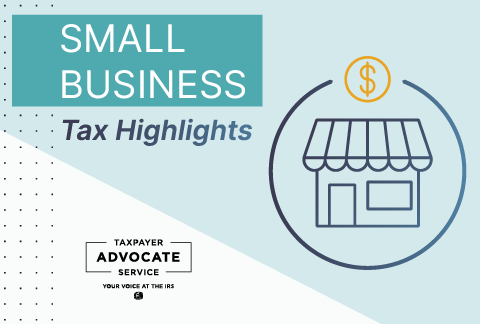Are you a small business owner struggling to navigate the world of business taxes? Don’t worry, we’ve got you covered! In this comprehensive guide, we will break down everything you need to know about handling business taxes. From income tax to self-employment tax, employment tax, excise tax, and estimated tax, we’ll walk you through the essentials, providing valuable tips and insights along the way. Get ready to master your taxes and maximize your deductions!
Income Tax: Reporting Your Business Income
All businesses are required to file annual income tax returns, except for partnerships which file annual information returns. The form you use depends on your business structure. To determine the right forms for reporting your business income, refer to Publication 583, “Starting a Business and Keeping Records.” Additionally, Publication 509, “Tax Calendars,” will guide you on when to file returns and make tax payments.
Self-Employment Tax: Understanding Your Social Security and Medicare Contributions
Self-employment (SE) tax is a social security and Medicare tax primarily for individuals who work for themselves. It functions similarly to the taxes withheld from employees’ wages by their employers. By paying SE tax, you contribute to your coverage under the social security system, which provides retirement, disability, survivor, and hospital insurance (Medicare) benefits. Make sure to file Schedule SE, “Self-Employment Tax,” with your federal income tax return if your net self-employment income was $400 or more, or if you had church employee income of $108.28 or more. Self-employed individuals in Puerto Rico should use Form 1040-PR to compute self-employment tax.
Note: Self-employed individuals usually must pay both SE tax and income tax.
Employment Tax: What You Need to Know for Your Employees
When you have employees, there are certain employment taxes you must pay and forms you must file. These include social security and Medicare taxes, federal income tax withholding, and federal unemployment (FUTA) tax. Additionally, if you pay an employee wages in excess of $200,000 in a calendar year, you must also withhold Additional Medicare Tax. To ensure you meet all the requirements, refer to Employment Taxes for Small Businesses and Publication 15, “Employer’s Tax Guide.”
Excise Tax: Are You Subject to Additional Taxes?
Depending on your business activities, you may be subject to Excise Tax. This tax can apply if you manufacture or sell certain products, operate specific kinds of businesses, use various kinds of equipment, facilities, or products, or receive payment for certain services. The specific tax may be imposed on the manufacturer, retailer, or consumer. For more information, consult Publication 510, “Excise Taxes.”
Estimated Tax: Meeting Your Obligations Throughout the Year
Taxes must be paid as you earn or receive income during the year, either through withholding or estimated tax payments. Estimated taxes cover not only income tax but also other taxes such as self-employment tax. Sole proprietors, partners, and S corporation shareholders are generally required to make estimated tax payments if they expect to owe at least $1,000 in tax after subtracting withholding and tax credits. Corporations should make estimated tax payments if they anticipate owing at least $500 in taxes.
Note: S corporations have their own set of rules for estimated tax payments. Consult the instructions for Form 1120-S, “U.S. Income Tax Return for an S Corporation,” for guidance.
If you underpay or pay your taxes late, you may be subject to an estimated tax penalty, even if you anticipate a refund when you file your tax return. For detailed information on estimated tax, refer to Publication 505, “Tax Withholding and Estimated Tax.”
Payment Options: Convenient Ways to Fulfill Your Tax Obligations
To ensure timely tax payments, you must generally deposit certain excise taxes, corporate income tax, and S corporation taxes before you file your return. Electronic funds transfer (EFT) is the preferred method for making federal tax deposits (FTDs). The Electronic Federal Tax Payment System (EFTPS) is the standard platform for EFT transactions. However, if you prefer an alternative to EFTPS, you can arrange for your tax professional, financial institution, payroll service, or trusted third party to make the EFT on your behalf. For estimated tax purposes, the year is divided into four payment periods, with payments due on April 15, June 15, September 15, and January 15 of the following year. You can make your estimated tax payments by mail using Form 1040-ES, online, or through the IRS2Go app. Visit IRS.gov/payments to explore all payment options.
Ten Federal Tax Tips to Help Small Business Owners
April shouldn’t be the only time you think about taxes! Keep these tax tips in mind throughout the year to maximize your deductions and credits:
-
Know your limitations and seek professional help when needed: While there are resources available to help you learn about taxes, consider hiring a professional tax preparer to ensure accuracy and compliance.
-
Keep adequate records: Accurate record keeping throughout the year will save you time and ensure your tax return is correct. Set up a system to organize and store receipts.
-
Separate personal and business finances: Establish separate bank accounts and credit cards for your business expenses to simplify tax reporting and auditing.
-
Correctly classify your business: Different business structures have varying tax advantages. Consult a tax attorney or certified public accountant to choose the structure that best suits your business.
-
Manage payroll effectively: Consider taking an online class or outsourcing payroll management to save time and ensure compliance with tax regulations.
-
Subscribe to e-News for Small Businesses: Stay informed about tax updates and announcements by subscribing to the IRS e-News for Small Businesses, a free email service.
-
Research small business tax deductions: Familiarize yourself with the wide range of tax deductions available for small business owners. Consult Publication 535, “Business Expenses,” for a comprehensive list.
-
Take advantage of the self-employment tax deduction: Deduct one-half of your SE tax as an adjustment to income on your federal income tax return. Report the amount on Form 1040 Schedule 1, Part II.
-
Submit tax payments timely: Ensure you pay estimated taxes if you expect to owe more than $1,000. Failure to pay enough tax can result in penalties.
-
File electronically for faster processing: Explore electronic filing options for business and self-employed taxpayers to expedite the tax filing process.
Stay Informed with TAS and IRS Resources
To further aid you in your journey, here are some valuable resources provided by the Taxpayer Advocate Service (TAS) and the Internal Revenue Service (IRS):
TAS resources:
- Getting an EIN
- Third Party Arrangements for Employment Taxes
- Choosing a Tax Return Preparer
IRS resources:
- Self-Employed Individual Tax Center
- Publication 334, Tax Guide for Small Business
- Need someone to prepare your tax return?
Remember, understanding and managing your business taxes is crucial for your financial success. By staying informed, seeking professional guidance when necessary, and implementing best practices, you can confidently navigate the complexities of the tax landscape and ensure compliance. Happy tax planning!



